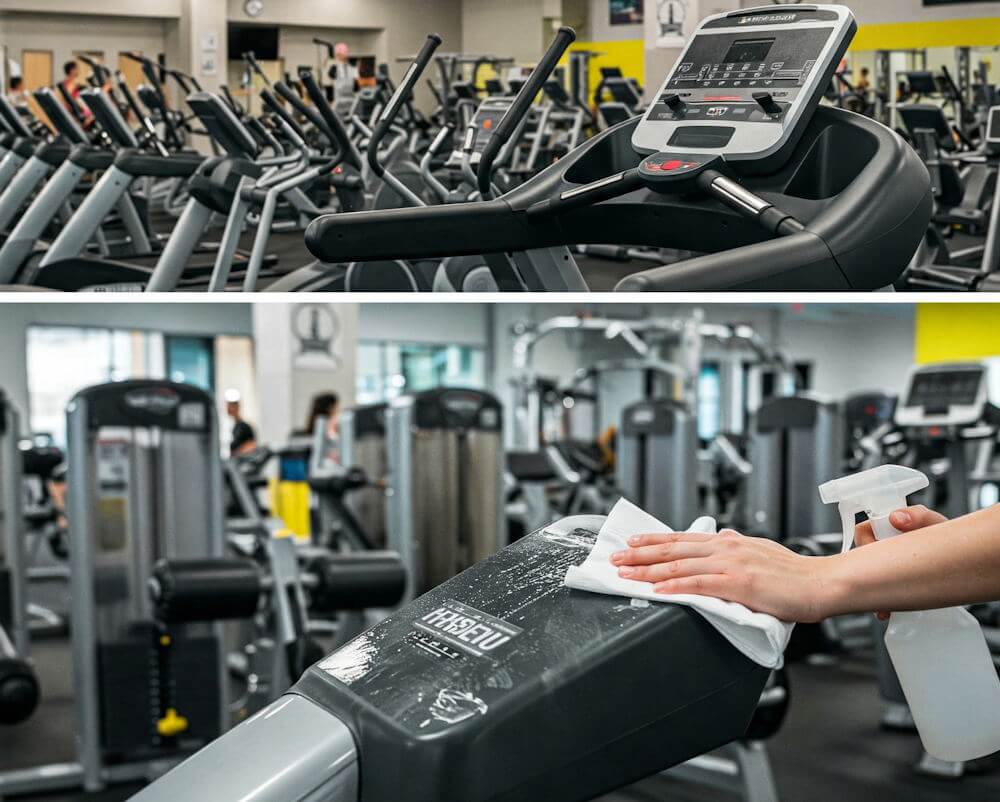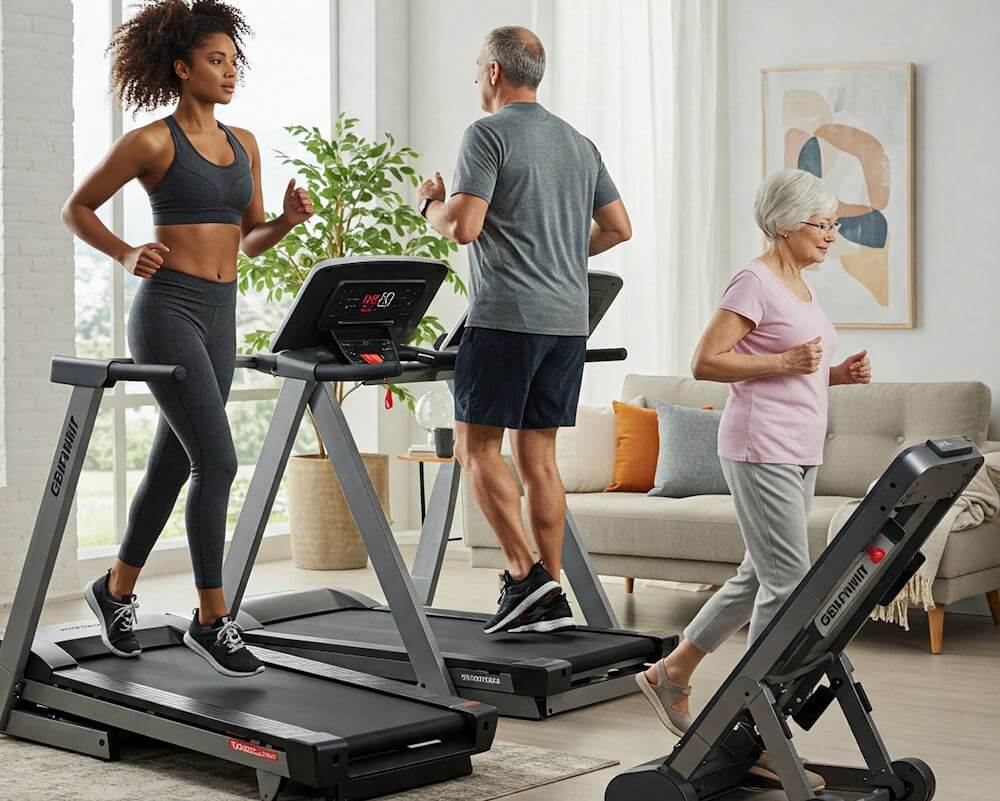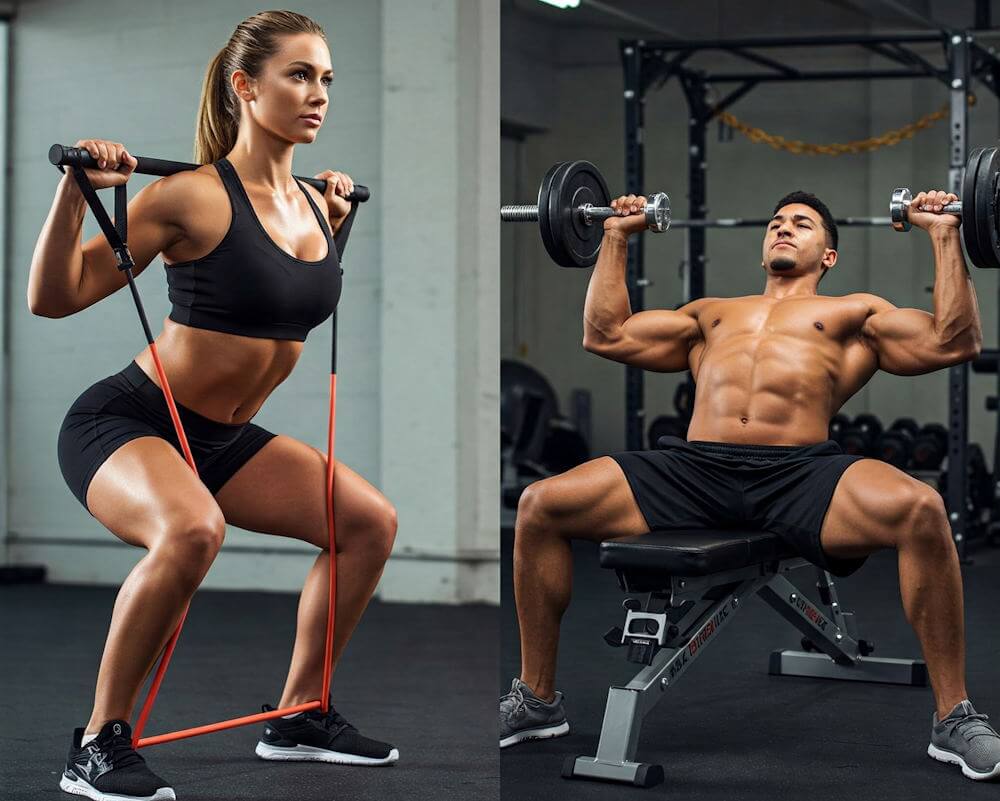Maintaining your exercise equipment is a fundamental aspect that should not be overlooked by any fitness enthusiast. Proper maintenance plays a crucial role in ensuring both the longevity of the equipment and the enhancement of your overall workout experience. When exercise machines and tools are well cared for, they perform optimally, which translates to more effective workouts and improved results.
Regular upkeep of your workout gear not only extends its lifespan but also ensures safety during use. Equipment that has not been adequately maintained can lead to malfunctions or accidents, which may result in serious injuries. For instance, a treadmill suffering from a lack of lubrication can seize, posing a danger to the user. Therefore, developing a routine that emphasizes the importance of maintenance will ultimately protect both the user and the equipment.
The benefits of maintaining exercise equipment extend beyond safety; it also enhances the quality of workouts. A well-maintained piece of equipment provides smoother operation and greater reliability, enabling users to perform exercises without interruptions or hindrances. Furthermore, clean and well-kept equipment boosts motivation, making individuals more likely to engage in their fitness routines regularly.
In essence, a commitment to maintaining your exercise equipment reflects a dedication to personal health and fitness. By factoring in regular cleaning, lubrication, and inspections into your fitness regimen, you not only invest in the equipment but also in your physical well-being. Through systematic maintenance practices, your exercise tools will remain in peak condition, ensuring that they serve their purpose effectively for years to come.
Common Types of Exercise Equipment
Maintaining a well-rounded fitness regimen often involves the use of various types of exercise equipment. Understanding the different categories of equipment available can aid individuals in selecting the right tools to meet their fitness goals. Here, we categorize exercise equipment into four main types: cardio machines, strength training equipment, free weights, and accessories.
Cardio machines are designed primarily for cardiovascular workouts, enhancing heart health and endurance. Common examples include treadmills, stationary bikes, and ellipticals. These devices allow individuals to engage in low-impact exercises that can be customized based on intensity levels. Regular usage of cardio machines can significantly boost overall fitness and promote weight loss.
Strength training equipment focuses on building muscle strength and improving physical endurance. This category encompasses a wide range of devices, from weight machines to resistance bands. Machines often target specific muscle groups, providing guided support, while free weights, such as dumbbells and kettlebells, allow for a more versatile workout. Both options are valuable for individuals aiming to increase strength and muscle mass.
Free weights serve as an essential component of strength training, offering limitless exercise possibilities. They require more stabilization than machines do, engaging various muscle groups simultaneously. Consequently, incorporating free weights creates a more functional and holistic workout experience, which can contribute to improved balance and core strength.
Lastly, accessories such as stability balls, foam rollers, and jump ropes also play a significant role in enhancing workouts. These tools are often utilized to support flexibility, balance, and recovery. By integrating accessories into a workout routine, individuals can add variety and engage in comprehensive exercises that target different areas of fitness.
Understanding the Manufacturer’s Guidelines
When it comes to maintaining and cleaning your exercise equipment, one of the most critical steps is understanding and adhering to the manufacturer’s guidelines. Each piece of equipment—from treadmills to stationary bikes—comes with specific instructions that are formulated based on the design and materials used. Following these guidelines not only helps to ensure optimal performance but also extends the longevity of the equipment.
Ignoring the manufacturer’s recommendations can have serious consequences. For example, using the wrong cleaning agents can degrade surfaces, or neglecting to lubricate moving parts as prescribed may lead to wear and, eventually, malfunction. Furthermore, failure to adhere to the specified maintenance schedule can void your warranty, leaving you responsible for any repair costs that arise from neglect. It is essential to consider that frequent use of exercise equipment creates wear and tear, making compliance with these guidelines even more significant.
Proper maintenance practices vary by equipment type, and manufacturers often provide detailed cleaning instructions. These may include recommendations for cleaning materials—such as soft cloths and mild detergents—that are safe for your equipment’s specific surfaces. Additionally, the guidelines can specify how often you should perform routine checks, such as inspecting cables, tightening bolts, and cleaning dust from motors. Such diligence can significantly reduce the risk of equipment failure, thus saving you from costly repairs and downtime.
In essence, investing time into understanding and following the manufacturer’s maintenance and cleaning guidelines is vital for sustaining your fitness equipment. Doing so not only fortifies the durability and functionality of your machine but also ensures a safe and pleasant exercise experience. By committing to these best practices, you can enhance your equipment’s lifespan and reap the long-term benefits of your investment.
Regular Cleaning Routines for Your Equipment
Maintaining the hygiene and longevity of your exercise equipment is paramount for both performance and safety. A well-structured cleaning routine can prevent the buildup of grime and bacteria, thus ensuring a healthy workout environment. The frequency and method of cleaning vary based on the type of equipment used; therefore, it is essential to adopt tailored cleaning practices for different machines.
For equipment such as treadmills and stationary bikes, daily cleaning is recommended. Wipe down the exposed surfaces, including handles, seat, and frame, using a mild detergent mixed with water or an alcohol-based disinfectant. Microfiber cloths are ideal for this purpose as they effectively capture dust and bacteria without scratching the surfaces. Be cautious not to use excessive liquid, as it may damage electronic components.
Weekly cleaning should encompass general-purpose machines, such as ellipticals and rowing machines. In addition to the daily routine, it’s advisable to inspect and clean the moving parts, particularly the belt and rollers, to prevent wear. A vacuum attachment can assist in removing dust or debris accumulated around these areas. For surfaces made of metal or plastic, a more specialized cleaner can be used to prevent tarnishing or fading.
Monthly cleaning should address weightlifting equipment and benches. This involves deeper cleaning of the upholstery and ensuring that all parts are free from sweat and moisture, which can lead to deterioration. Use a soft brush attachment to remove dust, and disinfect all surfaces to inhibit bacterial growth. It’s also vital to check for rust on metal weights and promptly address any areas showing signs of corrosion.
Incorporating these diverse cleaning routines for your exercise equipment promotes not only cleanliness but also enhances the lifespan of your gear. Regular cleaning habits ensure optimal performance and maintain a safe environment for your workouts.
Inspecting Your Equipment for Wear and Tear
Regular inspection of your exercise equipment is pivotal for ensuring safety and optimal performance. This process involves systematically checking for signs of wear and tear, which can compromise the functionality of your machines and may even lead to injuries. A thorough inspection should begin with a visual examination. Look for loose parts, which could include bolts, nuts, or hinges that may have become detached or loosened over time. If any components seem to be inadequately secured, they should be tightened immediately.
Another critical aspect to inspect is the condition of cables and cords. Frayed cables can lead to catastrophic failures or accidents if they snap during use. Hence, it’s essential to look for any visible damage along the length of the cables. If you discover any wear, it is advisable to replace them before using the equipment. Additionally, keep an eye out for rust, particularly on metal surfaces. Rust not only signifies neglect but can also weaken the structural integrity of your equipment. Wipe down any rusty areas with a cloth and consider applying a rust-preventative solution.
Furthermore, evaluate the equipment’s moving parts. Check for smooth operations, and listen for any unusual noises that could indicate internal issues. For instance, grinding or squeaking sounds may suggest that lubrication is needed, or parts may require replacement. Be mindful of the weights, in case of any deformation or cracking, as this could pose a significant risk during actual workouts. Lastly, establishing a regular schedule for these inspections—ideally monthly—will help catch potential problems early on. By consistently maintaining and inspecting your exercise equipment, you can enhance the longevity of your investments while ensuring a safer workout environment.
Lubrication and Maintenance Techniques
Proper lubrication and maintenance of exercise equipment are critical for ensuring longevity and optimal performance. Different types of equipment require specific lubrication techniques. For example, treadmills and stationary bikes generally have moving parts that benefit from regular application of silicone-based lubricants. These lubricants help reduce friction and wear on the belts and other movable components. It is advisable to apply lubricant every six months or according to the manufacturer’s recommendations. When applying lubricant, it is recommended to turn off the machine and wipe down the areas that require lubrication beforehand to avoid buildup of dust and dirt.
For weightlifting machines, such as cable systems or pulley systems, grease is more suitable than oil. Using a high-quality lithium grease provides a robust protective layer to metal parts, minimizing corrosion and wear. These machines should also be inspected regularly to confirm that all parts are in good working order. Any signs of wear might necessitate tightening screws and bolts to maintain proper alignment and overall safety.
Checking alignment is a fundamental aspect of maintenance. Misaligned parts can lead to accelerated wear and damage. Regularly examine the alignment of the handlebars or seats, ensuring they are securely fastened. Additionally, inspect the friction pads in bikes and spinning machines, as worn-out pads should be replaced immediately to maintain performance and safety. Further, it’s beneficial to clean the surfaces and components of exercise machines regularly. Dust and debris can cause wear over time and impede functionality.
Incorporating these lubrication and maintenance techniques into your routine will significantly enhance the durability of your equipment. A well-maintained machine not only performs better but also instills confidence in users, ensuring a safer workout environment.
Storing Your Equipment Properly
Proper storage of exercise equipment is paramount for maintaining its functionality and longevity. When not in use, exercise gear is susceptible to damage from dust, moisture, and varying temperature conditions. By adopting appropriate storage practices, you can prolong the life of your equipment while ensuring it remains in optimal working order for your next session.
To protect your exercise equipment from dust, it is advisable to invest in protective covers or bags designed specifically for fitness machines and gear. These protective accessories prevent dust accumulation while still allowing for air circulation, which is vital for avoiding moisture build-up. Additionally, placing your equipment in a dedicated storage area, such as a closet or a corner of a room, can help shield it from environmental factors and keep it out of sight, thereby maintaining a tidy workout space.
Moisture can severely impact the performance of exercise equipment, leading to rust and deterioration. Always ensure that the storage area is well-ventilated and dry. Using dehumidifiers can also help in environments prone to high humidity. If your equipment needs to be stored in a damp area, such as a basement, consider using moisture-absorbing products to further protect your belongings from moisture damage.
Temperature fluctuations can also affect the integrity of exercise equipment. Ideally, exercise gear should be stored indoors in a temperature-controlled environment. Avoid keeping equipment in garages or attics where extreme temperature changes may occur. Utilizing modular storage solutions, such as racks or shelving units, can optimize your space while providing easy access to your equipment. By organizing workout gear efficiently, you can enhance your workout experience and encourage regular use.
In conclusion, storing your exercise equipment properly is crucial in ensuring its durability and functionality. By adhering to best practices in managing dust, moisture, and temperature, alongside effective organization techniques, users can maintain a dedicated and tidy workout space.
Signs That Your Equipment Needs Professional Repair
Exercise equipment is a vital investment for maintaining a healthy lifestyle, and ensuring that it operates optimally is crucial for safety and efficiency. Recognizing the signs that your equipment may require professional repair can prevent further damage and enhance its longevity. One of the most common indicators is the presence of unusual noises during operation. If your treadmill starts squeaking or your stationary bike emits grinding sounds, these noises may suggest mechanical wear or misalignment that needs addressing.
Another critical sign to watch for is decreased performance. For instance, if your elliptical doesn’t maintain a steady pace or your rowing machine feels sluggish, it could indicate issues with the drive belt or resistance settings. These performance drops not only hinder workout effectiveness but also raise concerns about equipment safety.
Physical damage is another clear signal that repairs are necessary. Inspect your equipment regularly for cracks, frayed cords, and loose bolts. Hidden damages can lead to serious accidents if not addressed promptly. A stable and safe workout environment relies on equipment that remains structurally sound and free from significant wear and tear.
Additionally, monitor any irregularities in the functionality of your machines, such as issues with the console display or inconsistent resistance levels. If the console fails to reflect your settings accurately or malfunctions entirely, a professional evaluation may be warranted. Ignoring these symptoms could lead to further complications down the line.
Finally, keeping a maintenance log is a wise practice that can assist you in recognizing patterns of malfunction. Should you observe recurring issues, it is advisable to seek professional services. An early diagnosis can often spare you from costly repairs later on and ensure your equipment remains in peak condition for your fitness journey.
Conclusion and Final Maintenance Tips
Maintaining and cleaning your exercise equipment is an essential responsibility for any fitness enthusiast. Regular upkeep not only prolongs the life of the machines but also ensures optimal performance and user safety. Throughout this guide, we have highlighted the significance of a systematic approach to equipment care, emphasizing that neglecting these tasks can lead to malfunction and unwanted repair costs. A clean and well-maintained workout environment is crucial for sustaining motivation and ensuring a safe exercise space.
To summarize the key points addressed, it is vital to establish a routine maintenance schedule. This includes regularly inspecting moving parts, tightening loose bolts, and checking hydraulic or resistance systems on machines. Furthermore, wiping down surfaces with appropriate cleaning agents after each use helps eliminate sweat and bacteria accumulation. Utilizing covers can also protect equipment from dust and damage when not in use.
Here are a few quick tips to keep in mind for the long-term maintenance of your exercise equipment:
- Always refer to the manufacturer’s manual for specific cleaning instructions and maintenance requirements.
- Invest in quality cleaning products specifically designed for gym equipment to avoid damage.
- Regularly check cables and belts for wear and tear, replacing them promptly to prevent accidents.
- Ensure proper storage of smaller items such as weights and resistance bands to keep your workout area organized.
By adhering to these best practices, you can enhance not only the performance of your equipment but also your overall fitness experience. Remember that a commitment to regular maintenance pays dividends in safety, performance, and gear longevity.



